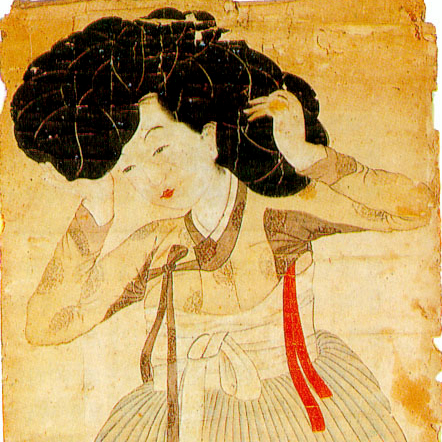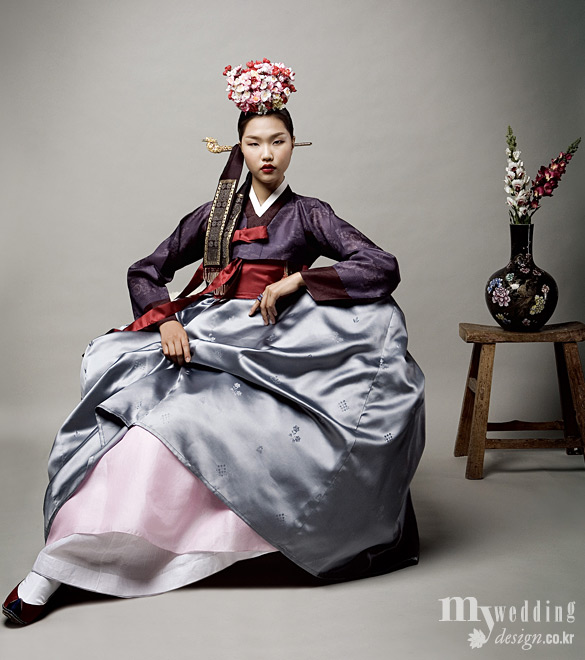Accessories
Traditional/ Modern Head Dresses
Both male and female wore their hair in a long braid until they were married, at which time the hair was knotted; man's hair was knotted in a topknot called sangtu on the top of the head and the woman’s hair was rolled into a ball shaped form and was set just above the nape of the neck.
A long pin, or binyeo, was thrust through the knotted hair of the woman as both a fastener and a decoration. The material and length of the binyeo varied according to the wearer’s class and status. Women wore a jokduri on their wedding day, and wore an ayam for protection from the cold. Men wore a gat, which varied according to class and status.
Before nineteenth century women of high social backgrounds and gisaeng wore wigs (gache). Like their Western counterparts, Koreans considered bigger and heavier wigs to be more desirable and aesthetic. Such was the women's frenzy for the gache that in 1788 King Jeongjo prohibited and banned, by royal decree, the use of gache, as they were deemed contrary to Confucian values of reserve and restraint.
In nineteenth century yangban women began to wear jokduri, a small hat that substituted gache. However gache enjoyed vast popularity in gisaeng circles well into the end of the century.

